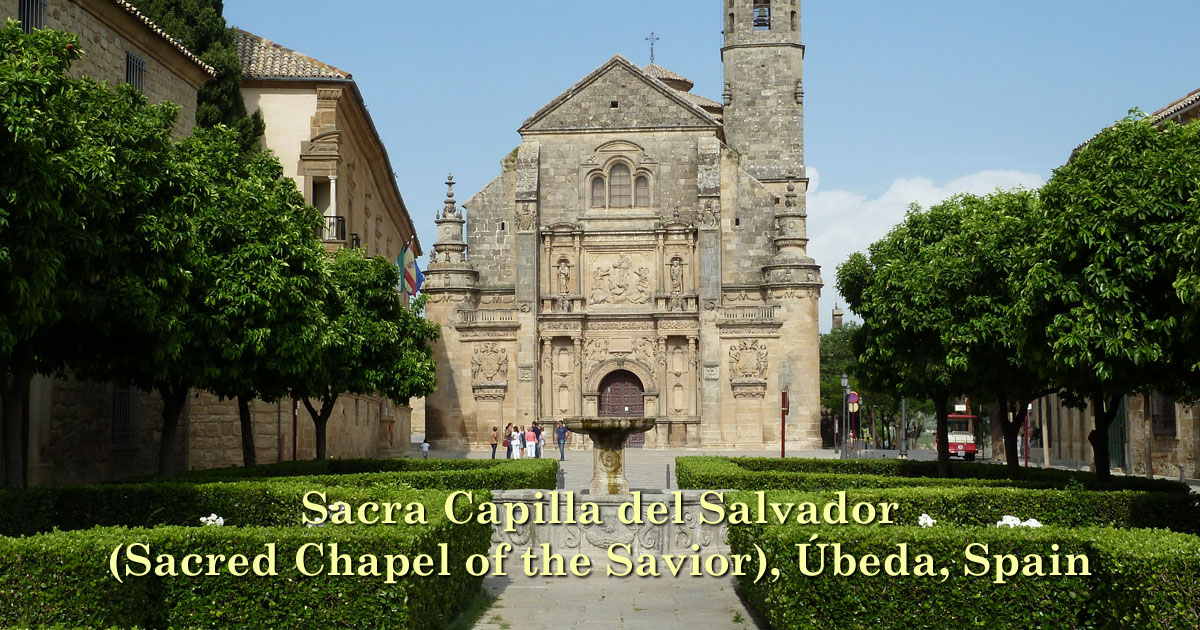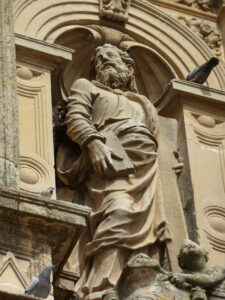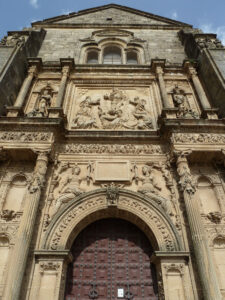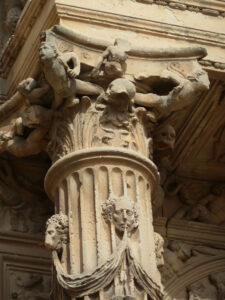Sacra Capilla del Salvador (Sacred Chapel of the Savior), Úbeda, Spain. An outstanding example of Spanish Renaissance architecture in the historic and often overlooked town of Úbeda in the province of Jaén, Andalusia, Spain. The church dates back to 1559 and was designed by renowned architects, Diego de Siloé and Andrés de Vandelvira. A real piece of historical splendour.
Sacra Capilla del Salvador, Úbeda, Spain

Sacra Capilla del Salvador – A Spanish Renaissance Wonder
The Sacred Chapel of the Savior of the World is a temple built under the patronage of Francisco de los Cobos as a pantheon attached to his palace in Úbeda (province of Jaén), in what is now called Plaza Vázquez de Molina.
Commissioned for construction in 1536, it was part of an extensive artistic program (which included his Palace, a University and a Hospital) 1 destined to raise the fame, fortune and personal glory that Charles V’s personal secretary had achieved, for which he turned to top-notch artists. The initial project was entrusted to Diego de Siloé from Burgos, while Andrés de Vandelvira was in charge of the project from 1540. The temple was consecrated in 1559. Its first chaplain was Deán Ortega, for whom the great palace that there is to the left of the main facade of the chapel.
El Salvador was the most ambitious undertaking of all the private religious architecture of the Spanish Renaissance. Declared a historical-artistic monument in 1931, it has become, in turn, one of the most popular symbols of this city whose Renaissance monumental complex, which together with that of Baeza, was declared a World Heritage Site by Unesco in 2003.
Úbeda & Beaza
The Spanish Renaissance Monumental Towns of Úbeda and Baeza. The urban morphology of the two small cities of Úbeda and Baeza in southern Spain dates back to the Moorish 9th century and to the Reconquista in the 13th century. An important development took place in the 16th century, when the cities were subject to renovation along the lines of the emerging Renaissance. This planning intervention was part of the introduction into Spain of new humanistic ideas from Italy, which went on to have a great influence on the architecture of Latin America.
[footer01]









